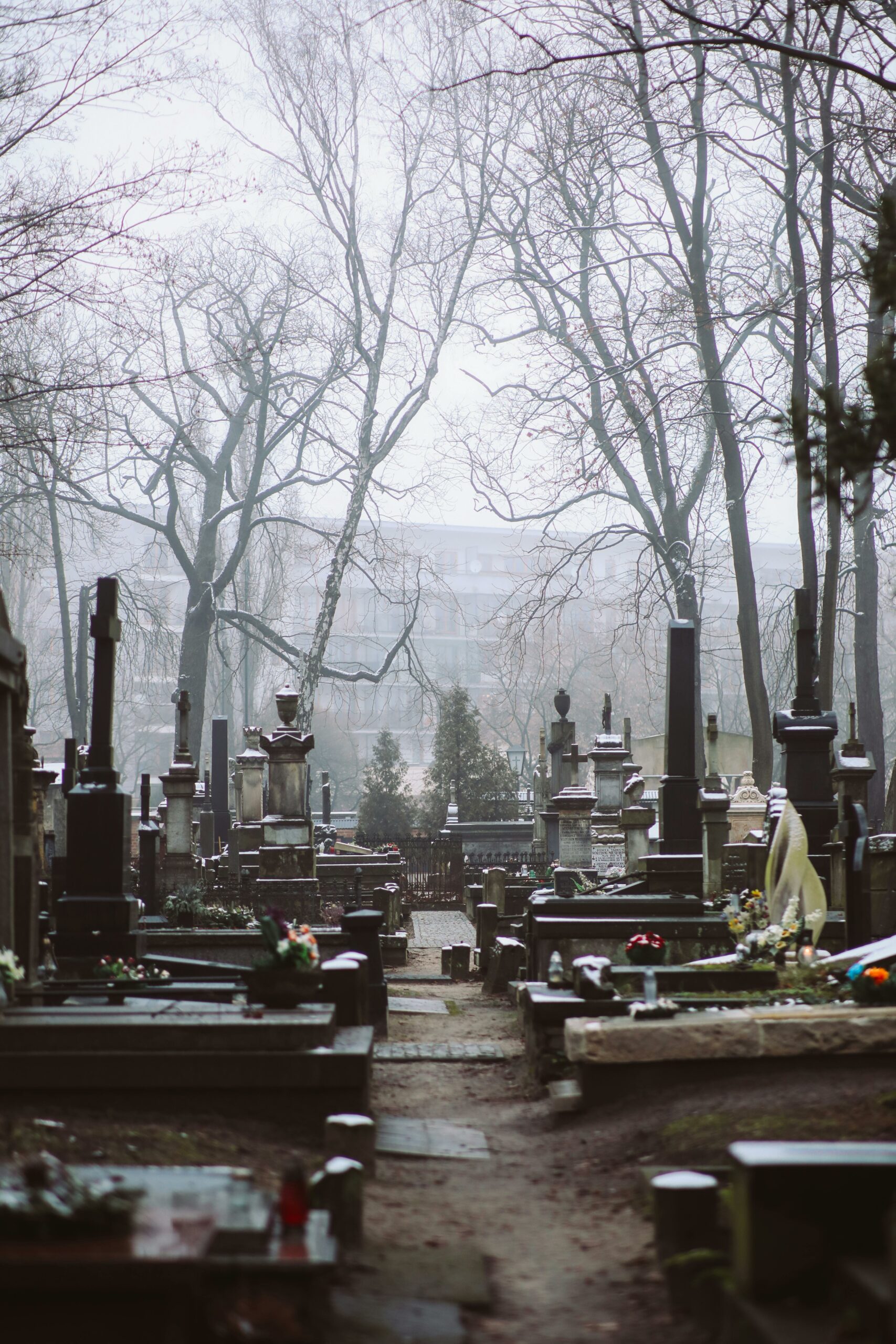Nestled in the charming town of Duxbury, Massachusetts, the Mayflower Cemetery Duxbury MA stands as a silent guardian of centuries-old secrets and stories waiting to be uncovered. Have you ever wondered about the hidden histories behind the gravestones of one of America’s most historic resting places? This historic cemetery in Duxbury, MA, is not just a burial ground; it’s a treasure trove of fascinating tales linked to the early Pilgrims and the legendary Mayflower voyage. Whether you’re a history buff or simply curious about historic cemeteries in Massachusetts, exploring Mayflower Cemetery offers a unique glimpse into the past that will captivate and surprise you.
What makes the Mayflower Cemetery in Duxbury so special? Beyond its serene beauty and picturesque setting, this cemetery holds the remains of some of the Mayflower Pilgrims and their descendants, making it a vital piece of American heritage. Visitors often ask, “What secrets does the Mayflower Cemetery hide?” From weathered epitaphs to unmarked graves, every corner of this historic site in Duxbury MA tells a compelling story. Discover the untold mysteries and legendary figures connected to the Mayflower’s voyage and early colonial life.
If you’re planning a visit or simply want to dive deep into New England’s rich history, the Mayflower Cemetery Duxbury MA should be at the top of your list. Unearth the captivating secrets of this historic resting place, and let the echoes of the past transport you to a time when the Pilgrims forged a new beginning on American soil. Don’t miss out on uncovering the secrets of this iconic historic cemetery in Duxbury, Massachusetts!
Unveiling 7 Fascinating Facts About Mayflower Cemetery Duxbury MA You Never Knew
Unveiling 7 Fascinating Facts About Mayflower Cemetery Duxbury MA You Never Knew
Nestled in the charming town of Duxbury, Massachusetts, the Mayflower Cemetery is more than just a resting place; it’s a portal to America’s early colonial past. If you think this cemetery is just rows of old gravestones, think again. There’s a lot of history, mystery, and stories waiting to be discovered at Mayflower Cemetery Duxbury MA. You maybe thought you knew the basics about this historic site, but here are seven fascinating facts that probably slipped under your radar.
1. The Cemetery Dates Back Over 300 Years
Mayflower Cemetery isn’t your average burial ground. It’s been in use since the 1600s, making it one of the oldest cemeteries in the United States. The town of Duxbury was settled by Pilgrims who came on the Mayflower in 1620, and many of their descendants found their final resting place here. The oldest gravestones are from the 17th century, their inscriptions worn by time but still telling stories of the past.
2. It’s The Final Resting Place of Pilgrim Descendants
Many people believe that the actual Mayflower passengers are buried here, but that’s not entirely true. Most of the original Pilgrims were buried in unmarked graves or lost to history. However, Mayflower Cemetery holds the graves of their children and grandchildren, who helped shaped early American society. This makes the cemetery a significant genealogical site for those tracing Pilgrim ancestry.
3. The Cemetery Features Unique Gravestone Artistry
Unlike modern cemeteries, Mayflower Cemetery contains gravestones with intricate carvings and symbols which reflects the beliefs and artistic styles of the time. Common motifs include skulls, winged cherubs, and hourglasses, representing mortality and the afterlife. This style is called “death’s head” and was popular in Puritan New England. If you visit, you’ll notice how the art evolved over the centuries, showing changing attitudes toward death.
4. Several Notable Figures Are Buried There
Among the many people laid to rest in Mayflower Cemetery, some names stand out for their historical importance:
- Elder William Brewster – A senior elder and leader among the Pilgrims.
- James Warren – A Revolutionary War leader and politician.
- Phineas Pratt – One of the early settlers who arrived shortly after the Mayflower.
These figures represent the rich history that connects the cemetery to broader American history, from colonial times to the fight for independence.
5. The Cemetery Has Seen Its Share of Preservation Challenges
Because of its age, Mayflower Cemetery has faced many preservation issues. Weathering, vandalism, and neglect caused some damage over years. Local historical societies and the town of Duxbury have worked hard to maintain and restore the gravestones, ensuring that future generations can learn from this site. Efforts include:
- Cleaning and repairing fragile stones.
- Documenting inscriptions before they fade.
- Installing informational plaques for visitors.
Still, the cemetery reminds us how fragile historical sites can be if not cared for properly.
6. It’s a Popular Spot for History Buffs and Genealogists
If you’re ever in the area and interested in American history, Mayflower Cemetery is a must-visit. It’s popular among genealogists who want to trace their Pilgrim roots and historians who study early colonial life. Walking through the cemetery is like stepping back in time — the names, dates, and symbols offer clues about the lives and beliefs of early settlers. Guided tours and local museums often include the cemetery as part of their educational programs.
7. The Cemetery Reflects Broader Changes in Burial Practices
Over the centuries, burial customs changed and the cemetery shows this evolution clearly:
- 17th–18th Centuries: Simple, Puritan-style graves with death’s head motifs.
- 19th Century: More elaborate Victorian monuments and family plots.
- 20th Century: Modern gravestones with personal inscriptions and photos.
This progression mirrors societal changes in attitudes toward death, remembrance, and family legacy.
Quick Facts About Mayflower Cemetery Duxbury MA
| Aspect | Details |
|---|---|
| Established | Early 1600s |
| Location | Duxbury, Massachusetts |
| Notable burials | Pilgrim descendants, Revolutionary figures |
| Style of gravestones | Puritan death’s head, Victorian monuments |
| Preservation status | Ongoing restoration efforts |
| Visitor information | Open to public, guided tours available |
| Genealogical significance | High, important for Pilgrim ancestry |
How Mayflower Cemetery Compares to Other Historic Cemeteries
When you think about old cemeter
How Mayflower Cemetery Duxbury MA Preserves the Legacy of Pilgrim Ancestors
The Mayflower Cemetery in Duxbury, MA stands as a silent witness to the stories of Pilgrim ancestors who helped shaped the early history of America. It’s not just a burial ground but a place where memories from centuries ago are preserved, and secrets of the past quietly unfold. Visitors often finds themselves stepping back into a world where the challenges, hopes, and beliefs of the Pilgrims are still very much alive.
A Glimpse into History: The Birth of Mayflower Cemetery
The cemetery is located in Duxbury, Massachusetts, which is just a short distance from Plymouth, the landing site of the Mayflower in 1620. This site became the final resting place for many of the original Pilgrims and their descendants. The cemetery itself dates back to the early 17th century, making it one of the oldest in the United States.
- Established: Early 1600s
- Location: Duxbury, MA
- Significance: Burial site for original Pilgrim settlers and families
It was not just a place of rest but also a symbol of the Pilgrims’ survival and commitment to their new world. Many of the headstones and markers tells stories of hardship, faith, and family ties that shaped the early colonial community.
Discover Secrets of Historic Resting Place
Walking through Mayflower Cemetery, one might notice the worn, weather-beaten gravestones with inscriptions barely legible. These stones hold secrets that historians and genealogists have long sought to uncover. The cemetery itself is like an open book, telling tales of:
- Pilgrim family lineages
- Early colonial life hardships
- Mortality rates and causes of death in the 1600s
- Religious beliefs reflected in epitaphs and symbols
For example, the gravestones often use symbols such as skulls, cherubs, and hourglasses, which represent mortality and the fleeting nature of life. These symbols are not just decoration but insight into the Pilgrim’s mindset and cultural views on death and afterlife.
How Mayflower Cemetery Preserves the Legacy of Pilgrim Ancestors
Preservation efforts at Mayflower Cemetery are ongoing, with local historical societies and preservation groups working tirelessly to maintain the site. The legacy of the Pilgrims is kept alive through:
- Careful restoration of old gravestones
- Documentation and digitization of burial records
- Educational programs for schools and tourists
- Guided tours that share stories of Pilgrim families
The cemetery is not just a memorial but a living classroom where the community and visitors can connect with the origins of American history.
Comparison: Mayflower Cemetery vs Other Historic Cemeteries in Massachusetts
| Feature | Mayflower Cemetery, Duxbury | Old Burying Point, Salem | Granary Burying Ground, Boston |
|---|---|---|---|
| Established | Early 1600s | 1637 | 1660 |
| Notable Burials | Pilgrim settlers and descendants | Early settlers, witch trial victims | Revolutionary War figures |
| Preservation Status | Actively preserved with tours | Preserved, historic landmark | Well preserved, tourist site |
| Unique Feature | Symbolic gravestones reflecting Pilgrim beliefs | Witch trial history | Revolutionary War connections |
This comparison shows Mayflower Cemetery as uniquely tied to the Pilgrim narrative, whereas others focus on different aspects of Colonial history.
Practical Tips for Visiting Mayflower Cemetery
If you plan to visit the cemetery, here are some tips to make your experience meaningful:
- Bring a camera or sketchbook to capture the intricate gravestone carvings.
- Visit during daylight hours to better read inscriptions.
- Take a guided tour if available, for deeper historical context.
- Wear comfortable shoes since the terrain can be uneven.
- Respect the site by not disturbing graves or removing artifacts.
Interesting Facts About Mayflower Cemetery Duxbury MA
- Some gravestones date back to the 1620s, making them among the oldest in America.
- The cemetery includes the graves of notable Pilgrim families such as the Aldens and the Standishes.
- It is believed that some unmarked graves exists, due to the harsh living conditions faced by early settlers.
- The cemetery has been the subject of archaeological studies revealing burial practices and health conditions of the time.
By preserving these graves, Mayflower Cemetery acts as a bridge between the past and present, allowing us to honour those who faced immense challenges in pursuit of a new life.
The Mayflower Cemetery in Duxbury, MA remains a profound testament to the courage and faith of the Pilgrim ancestors. Each stone, each name etched into its grounds, keeps alive stories that shaped not only a town but the whole nation. It’s a place where history breathes quietly, inviting us to discover, reflect, and remember.
Exploring the Historic Gravestones: What Makes Mayflower Cemetery Duxbury MA Unique?
Exploring the Historic Gravestones: What Makes Mayflower Cemetery Duxbury MA Unique?
If you ever find yourself wandering through the charming town of Duxbury, Massachusetts, a visit to the Mayflower Cemetery is a must. This historic resting place isn’t just a site for mourning but a living museum of early American history, reflecting the lives, struggles, and stories of the Pilgrims and their descendants. Many visitors don’t realise the rich secrets buried beneath the surface of the weathered stones and ancient markers. But what exactly makes Mayflower Cemetery in Duxbury, MA so unique? Let’s dive into the fascinating aspects that set this cemetery apart from others.
A Glimpse into the Past: The Historical Importance of Mayflower Cemetery
Mayflower Cemetery, located in Duxbury, has been in use since the early 1600s, soon after the Pilgrims arrived on the Mayflower ship in 1620. It is one of the oldest cemeteries in the United States, serving as the final resting place for many of the original settlers and their families. Unlike many cemeteries that are just collections of graves, this one tells a story spanning centuries.
- Established: Early 17th century (around 1627)
- Location: Duxbury, Plymouth County, Massachusetts
- Notable burials: Pilgrim descendants, local historical figures
- Size: Approximately 5 acres with hundreds of gravestones
The cemetery’s connection to the Mayflower Pilgrims gives it a unique historical weight. Some gravestones belong to people who lived through the harsh first winters in the New World, and others mark the lives of those who helped shape early colonial society.
What Makes the Gravestones Stand Out?
Unlike modern cemeteries where gravestones often look uniform and polished, the markers at Mayflower Cemetery are remarkably varied and rustic. Many of these stones are hand-carved from local slate or sandstone, materials that were readily available to the settlers.
Here’s what you might notice when exploring the gravestones:
- Carvings and Symbols: The stones often have intricate symbols such as skulls, hourglasses, cherubs, and winged faces. These were common in 17th and 18th-century Puritan gravestones, representing mortality, the passage of time, and the soul’s journey.
- Erosion and Wear: Due to centuries of exposure to New England’s weather, many gravestones are difficult to read, creating an air of mystery about the exact dates and names.
- Unique Epitaphs: Many inscriptions are written in old English or use poetic, religious language that reflect the beliefs and values of the time.
- Varied Sizes and Shapes: From small footstones to large family monuments, the diversity in size tells you about the social status or family size of the interred.
Secrets Hidden in Plain Sight: Notable Gravestones and Their Stories
Mayflower Cemetery isn’t just a collection of old stones; it’s a place full of stories. Some graves commemorate individuals whose lives influenced American history, while others reveal lesser-known tales of hardship and perseverance.
For example:
- Elder William Brewster: One of the Mayflower Pilgrims and a spiritual leader of the colony, his descendants are buried here, though his exact grave is unknown.
- The Alden Family: John and Priscilla Alden were famous Pilgrims whose gravesites have drawn visitors for centuries.
- Unmarked Graves: Many early settlers were buried without markers, or their stones have been lost, reminding us of the fragility of memory.
Visitors often find it intriguing to compare early gravestones with those from the 19th century, seeing how styles and customs changed over time.
How Mayflower Cemetery Compares to Other Historic Cemeteries
To get a clearer picture about its uniqueness, here’s how Mayflower Cemetery stacks up against other historic cemeteries in New England:
| Cemetery | Established | Notable Features | Location | Approximate Size |
|---|---|---|---|---|
| Mayflower Cemetery | Early 1600s | Pilgrim descendants, Puritan symbolism | Duxbury, MA | ~5 acres |
| Granary Burying Ground | 1660s | Famous revolutionaries, ornate gravestones | Boston, MA | ~2.5 acres |
| Old Burying Ground | 1637 | Early settlers, variety of gravestone art | Cambridge, MA | ~3 acres |
Mayflower Cemetery stands out because of its direct link to the very first settlers who arrived on the Mayflower, a fact that few other cemeteries can claim so closely.
Practical Tips For Visiting Mayflower Cemetery in Duxbury
If you planning a trip to this historic site, here are some practical considerations to keep in
Top 5 Reasons to Visit Mayflower Cemetery in Duxbury MA for History Enthusiasts
Exploring historic sites around New York often leads visitors to places carrying deep stories of America’s early days. One such location just a short trip away in Massachusetts is the Mayflower Cemetery in Duxbury, MA. For history buffs, this resting place is more than a cemetery; it is a gateway to the past, filled with secrets and tales of the Pilgrims who shaped the nation. If you are wondering why this spot should be on your travel list, here are the top 5 reasons that make Mayflower Cemetery a must-visit for history enthusiasts.
1. Rich Connection to the Pilgrims and Mayflower Voyage
Mayflower Cemetery in Duxbury, MA, is intimately linked with the Pilgrims who arrived on the Mayflower in 1620. Many of the early settlers who survived that perilous journey and established Plymouth Colony are buried here. It is one of the oldest cemeteries in America with gravestones dating back to the 17th century.
- Contains graves of original Mayflower passengers, including notable figures.
- Reflects early colonial burial customs and stone carving styles.
- Offers tangible links to the earliest European settlers in New England.
Comparing it to other historical cemeteries, Mayflower Cemetery stands out because it holds direct ties to the Pilgrim story rather than later settlers or Revolutionary War figures.
2. Discover Secrets of Historic Resting Place
Walking through Mayflower Cemetery feels like stepping through a history book. The weathered headstones and inscriptions offer clues about the lives, deaths, and beliefs of those who lived hundreds of years ago. For example, many gravestones feature unique iconography such as skulls, hourglasses, and cherubs which symbolise mortality and resurrection.
Visitors can find:
- Cryptic epitaphs that tell stories of hardships, family, and faith.
- Burial plots arranged according to family ties and social status.
- Stone carver signatures, revealing different artisans who worked the stones.
For those interested in genealogy or colonial art, this cemetery reveals secrets that textbooks often miss.
3. Educational Value for Students and Researchers
Mayflower Cemetery is a fantastic resource for educators and students studying early American history. The site is accessible for field trips, and local historians often give guided tours that explain the significance of the graves and the broader historical context.
Educational benefits includes:
- Hands-on learning about 17th-century colonial life and death.
- Insight into the challenges faced by the Pilgrims and their descendants.
- Opportunities to examine primary source materials right in the field.
In comparison to museums or archives, visiting a cemetery provides a unique, immersive experience that can deepen understanding of history’s human side.
4. Scenic and Serene Environment for Reflection
Beyond its historical importance, Mayflower Cemetery offers a peaceful, scenic setting for visitors. Situated in Duxbury, the grounds are well-maintained with old trees, flowering shrubs, and open spaces that invite quiet contemplation.
Features of the environment include:
- Calm walking paths perfect for reflective strolls.
- Benches and spots ideal for pausing and reading inscriptions.
- Seasonal beauty with autumn leaves and spring blossoms enhancing the atmosphere.
This combination of natural beauty and historic ambiance make it appealing not only to historians but to anyone seeking a tranquil place to connect with the past.
5. Proximity to Other Historic Sites in Duxbury
Visiting Mayflower Cemetery is easy to combine with other historic attractions in the area, making it part of a broader journey into colonial history. Duxbury itself is rich in heritage, with several museums, preserved homes, and landmarks related to the Pilgrims.
Nearby attractions worth checking out:
- Alden House Historic Site – the home of John Alden, Mayflower passenger.
- Myles Standish Burial Ground – another early colonial cemetery.
- Duxbury Beach and waterfront areas with historic lighthouses.
Planning a day trip or weekend tour around these sites provides a richer, more complete picture of early American life and the legacy of the Pilgrims.
For those intrigued by America’s beginnings, Mayflower Cemetery in Duxbury, MA, offers a uniquely immersive experience. It’s not just a place where people rests but a living museum, a puzzle of stories waiting to be uncovered. Whether you’re a passionate history lover, a student, or just curious traveller, this historic resting place invites you to walk with the Pilgrims, discover their secrets, and reflect on the foundations of a nation. Next time you find yourself in New England, don’t miss the chance to explore Mayflower Cemetery – a quiet spot full of loud echoes from the past.
What Secrets Do the Mayflower Cemetery Duxbury MA Tombstones Reveal About Early Settlers?
What Secrets Do the Mayflower Cemetery Duxbury MA Tombstones Reveal About Early Settlers?
The Mayflower Cemetery in Duxbury, Massachusetts, is more than just a peaceful resting place; it’s an open book telling stories of the early settlers who shaped American history. Nestled in a small coastal town, this historic site holds tombstones that whisper secrets about lives lived centuries ago. Many visitors don’t realise how much these weathered stones can teach us about the past, from family ties to social status, and even the hardships faced by those first colonists arriving on the Mayflower.
A Glimpse Into Early Colonial Life Through Tombstones
The Mayflower Cemetery Duxbury MA is one of the oldest burial grounds in the United States, dating back to the 17th century. Many of those buried here were direct descendants or even original passengers of the Mayflower ship. Examining their gravestones reveals interesting details, like occupation, origin, and sometimes cause of death, offering a snapshot of early colonial life.
Some secrets tombstones reveal include:
- Family connections: Many gravestones have inscriptions showing family relationships, such as “wife of,” “son of,” or “daughter of,” helping genealogists trace lineage.
- Mortality rates: The ages at death, often very young, reflect the harsh living conditions and diseases that early settlers endured.
- Religious beliefs: Epitaphs often mention faith, reflecting the Puritan values dominant at the time.
- Social status: The size and ornamentation of tombstones can indicate the relative wealth or importance of individuals.
The Symbolism Hidden in the Carvings
If you look closer to the carvings on the Mayflower Cemetery Duxbury MA gravestones, you’ll notice that symbols were not randomly chosen. They represent beliefs about death, afterlife, and morality that were common in the settlers’ community.
Common symbols found include:
- Skulls and Crossbones: A reminder of mortality, used to warn passersby about the inevitability of death.
- Winged Death’s Heads: These depict the soul’s flight to heaven and was very popular in 17th-century Puritan gravestones.
- Hourglasses: Symbolising the passing of time and life’s brevity.
- Willow Trees: Representing mourning and sorrow, often appearing in later centuries.
These symbols helps historians understand how early settlers viewed death and what values they held dear.
What Tombstone Inscriptions Tell Us About Settler’s Lives
The inscriptions on tombstones in Mayflower Cemetery aren’t merely names and dates. They sometimes include poetic verses, biblical quotes, and personal messages that shed light on the individual’s personality or the circumstances surrounding their death.
For example:
- Many epitaphs cited hardships endured by settlers, such as “Departed this life after a long sickness” or “Taken by the cruel hand of the sea.”
- Some inscriptions include professions or roles, like “Captain,” “Reverend,” or “Farmer,” giving clues about the settler’s place in society.
- Occasionally, you’ll find references to their homeland in England or other parts of Europe, marking the immigrant nature of the community.
Comparing the Mayflower Cemetery to Other Colonial Burial Grounds
Mayflower Cemetery in Duxbury is often compared to other historic cemeteries like Burial Hill in Plymouth or Granary Burying Ground in Boston. While all these sites share similar colonial roots, there are differences in tombstone styles and inscriptions that reflect regional and temporal variations.
| Feature | Mayflower Cemetery Duxbury MA | Burial Hill Plymouth | Granary Burying Ground Boston |
|---|---|---|---|
| Earliest burials | Early 1600s | Early 1600s | Late 1600s |
| Common symbols | Winged death heads, skulls, hourglasses | Skull and crossbones, cherubs | Willow trees, urns, obelisks |
| Inscriptions style | Personal, religious, familial | Religious, Puritanical | More elaborate, poetic |
| Notable burials | Descendants of Mayflower passengers | Mayflower passengers | Prominent Boston figures |
This comparison highlight how Mayflower Cemetery preserves a very direct link to the Mayflower settlers, making it a unique historical resource.
Practical Tips for Visiting Mayflower Cemetery in Duxbury
If you plan to visit Mayflower Cemetery, you’ll want to make the most of your trip by knowing what to look for and how to appreciate the historic significance.
- Wear comfortable shoes; the cemetery grounds are uneven and some gravesites are hard to reach.
- Bring a magnifying glass or camera with zoom to read difficult inscriptions on weathered stones.
- Take notes or photos of interesting symbols or
Conclusion
Mayflower Cemetery in Duxbury, MA, stands as a significant historical landmark, offering a poignant glimpse into the early Pilgrim settlers and their enduring legacy. Throughout this article, we explored its rich heritage, notable burials, and serene landscape that attracts history enthusiasts and visitors alike. The cemetery not only serves as a resting place for many of Duxbury’s founding families but also reflects the town’s deep-rooted connection to America’s colonial past. Preserving this sacred site ensures that future generations can appreciate the stories and sacrifices of those who shaped the nation. Whether you are a history buff, a genealogist, or simply seeking a peaceful place for reflection, Mayflower Cemetery provides a meaningful experience. We encourage you to visit and pay tribute to the pioneers who helped build the foundation of American history, and to support efforts to maintain and protect this invaluable cultural treasure.






